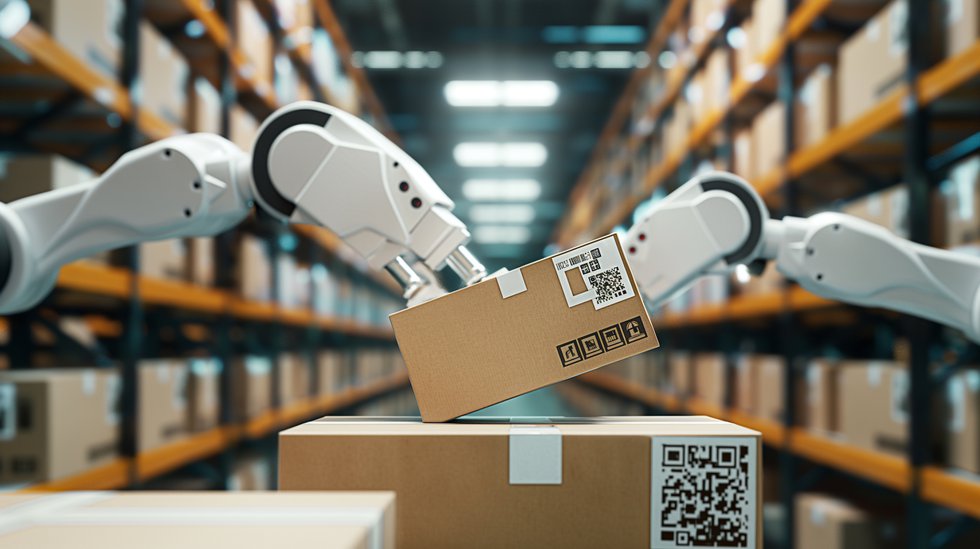
Maksym - stock.adobe.com
Against the backdrop of a modern distribution center, robotic arms delicately handle cardboard boxes labeled with QR codes, showcasing the role of smart packaging in automatic logi
The demand for safer, more sustainable products and packaging is growing ever louder across the United Kingdom. This is especially true since the UK withdrew from the European Union-wide program that restricts and regulates dangerous chemicals (REACH), opting instead to launch their own UK REACH, a program whose progress has been beset by delays and budget cuts. Many of the calls for more guardrails centre around a class of chemicals that have come to be known colloquially as “forever chemicals.” More formally known as poly- and perfluoroalkyl substances, or PFAS for short, these chemicals earned the colloquialism due to the fact that they are resistant to damage from water, air, heat and more. While this makes them ideal for packaging, these attributes also enable them to live on in the environment for at least 1000 years (and wreak havoc in our bodies for a lifetime).
While increased regulation of PFAS in the UK is fragmented and slower to implement than desired by consumers and regulators, Science-based AI offers an opportunity for industry to lead the way in taking steps to reduce use of these dangerous chemicals – a move that would surely be cheered by government and consumers alike. Consider this bird’s eye view of how Science-based AI is already, and can continue to in more significant ways, transform how companies tackle the problem of replacing troublesome chemicals in products and packaging.
Incorporating AI into existing product development processes.
Studying chemicals in isolation is an overwhelming task. Studying them in complex formulations is even more challenging. But that’s exactly what companies who produce everyday and industrial products must do when considering replacing ingredients - look at how every potential ingredient would behave in combination with other chemicals in their specific product formulations. This is a herculean, timely and expensive task. But AI models can predict the behaviours of new materials under a range of conditions, helping companies to streamline the development process, screen and selectively narrow down the most promising candidates, thereby sidestepping the traditional, time-intensive lab-based empirical approach in favor of nearly instantaneous experimentation in software.
How Does it Work?
Science-based AI is already enabling scientists to run thousands of experiments virtually. It accomplishes this by training an AI model with relevant scientific knowledge, understanding of physical systems, and relevant data sets. SBAI Tools can provide valid predictions even for the small datasets typically available to chemicals and materials companies. Once this is done, scientists can then quickly explore the vast space of possible chemical formulations or combinations, identifying compounds that could replace “forever chemicals” and other toxic ingredients without sacrificing performance or quality. AI models can also help product developers evaluate the trade-offs between different ingredient alternatives in terms of cost, availability, safety, or environmental impact.
Assessing and managing compliance risk with existing and potential regulations.
The predictive ability of AI makes it possible for companies to identify replacement chemicals in formulations, easing the compliance process with existing regulations. It also provides the opportunity for manufacturers to proactively get ahead of potential regulations, rather than a traditional defensive mode when it comes to government intervention in industry.
The clock is ticking and the time is now for industry to take the lead, and leverage the advanced technology available to us now to solve this problem.
